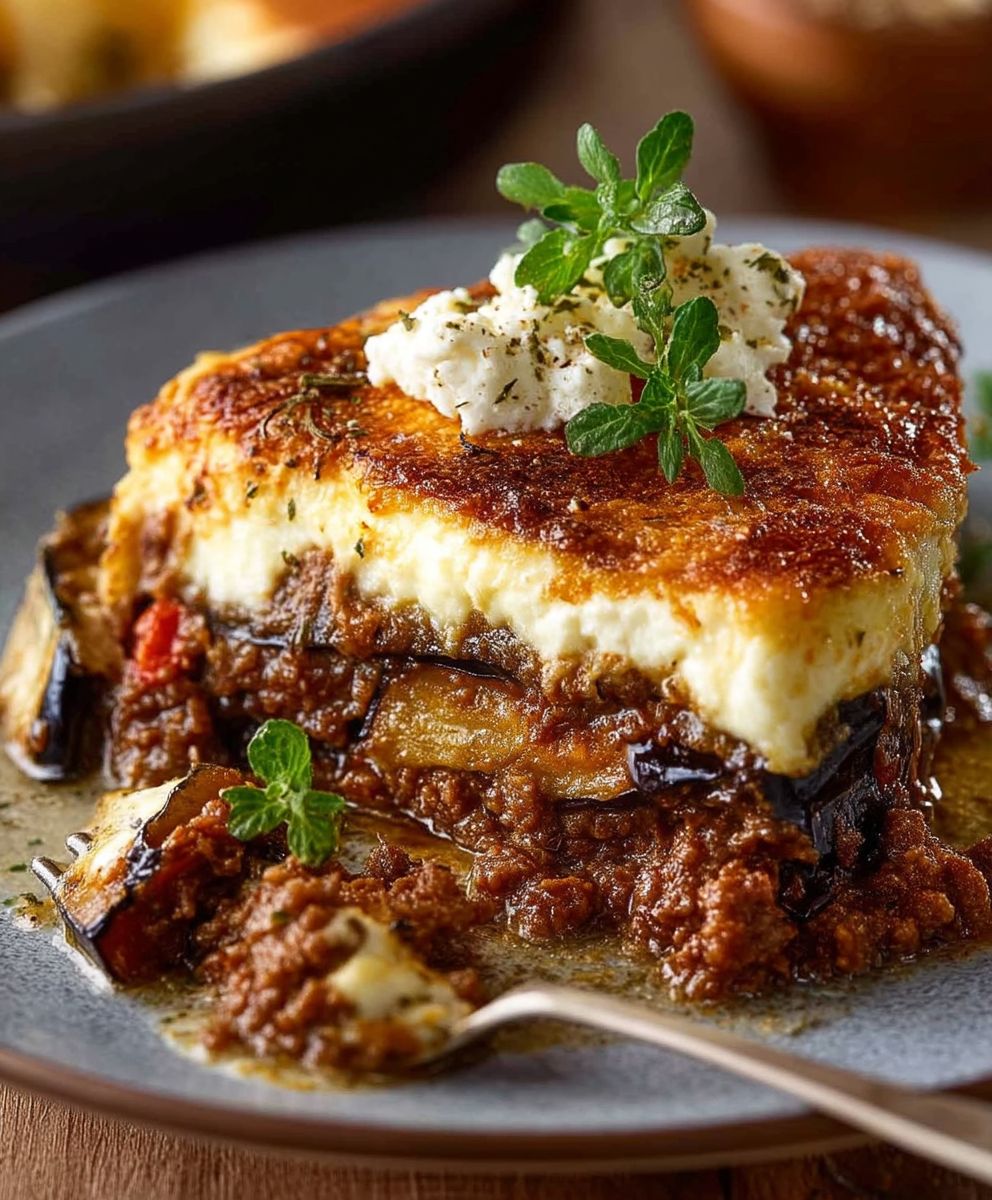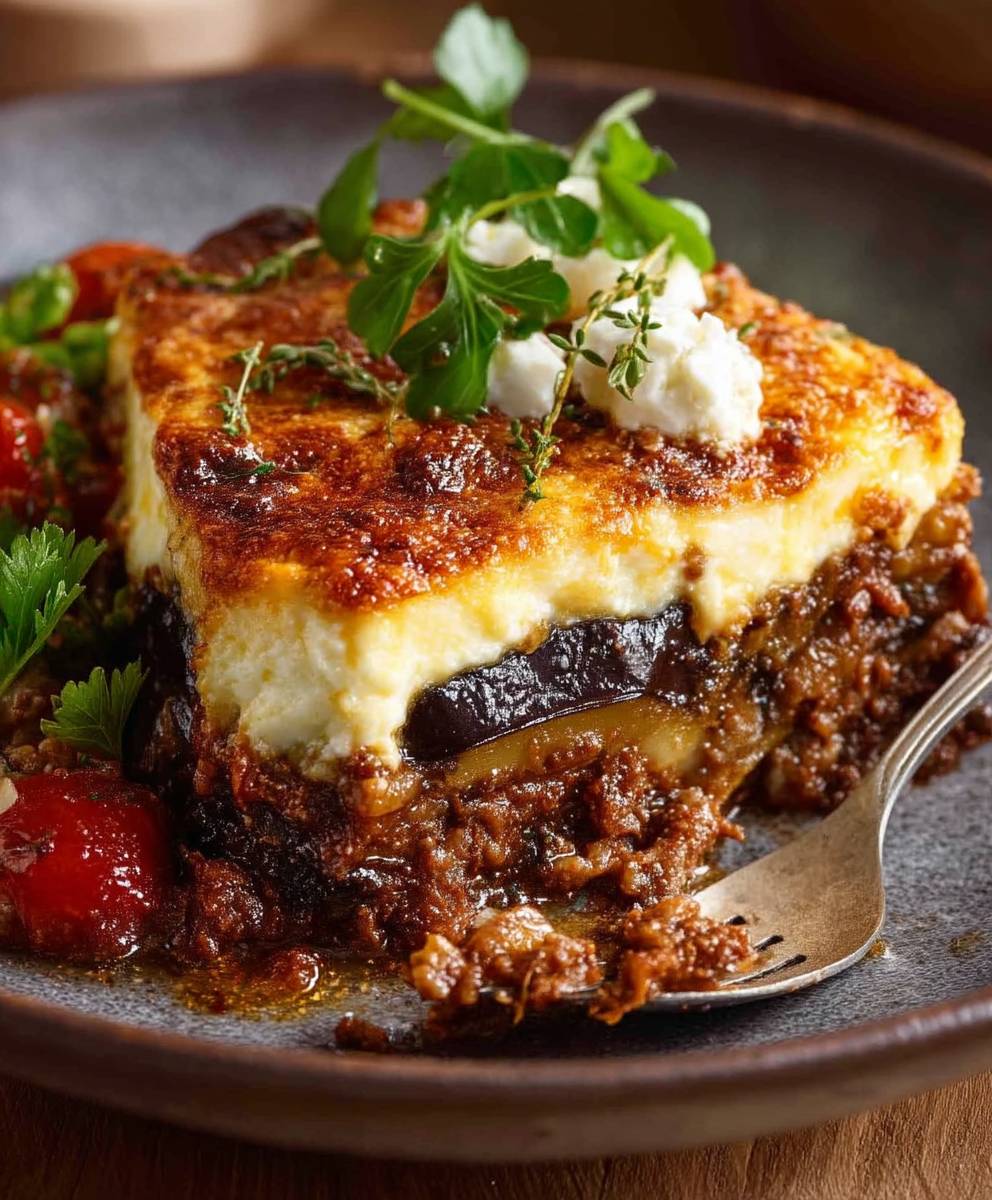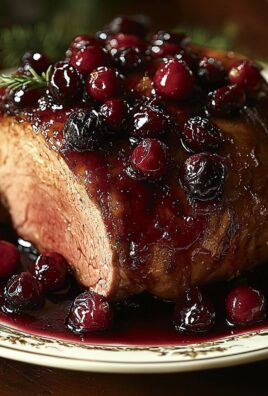Greek Moussaka, a symphony of layered flavors, is more than just a casserole; it’s a culinary journey to the sun-drenched shores of Greece. Imagine sinking your fork into tender slices of eggplant, a rich meat sauce infused with aromatic spices, and a creamy béchamel topping baked to golden perfection. Are you ready to experience a taste of the Mediterranean?
While the exact origins of Greek Moussaka are debated, its modern form is largely attributed to Nikolaos Tselementes, a renowned Greek chef who sought to elevate traditional dishes with French culinary techniques in the early 20th century. He replaced the traditional three layers of meat, vegetables, and sauce with the now-classic béchamel topping, giving the dish its signature creamy richness.
People adore Moussaka for its comforting and satisfying nature. The combination of textures the soft eggplant, the hearty meat sauce, and the velvety béchamel creates a truly unforgettable eating experience. It’s a dish that’s perfect for a special occasion or a cozy weeknight dinner. The savory spices and rich flavors make it a crowd-pleaser, and while it may seem intimidating to make, our recipe simplifies the process, allowing you to create this authentic Greek masterpiece in your own kitchen. So, let’s embark on this culinary adventure and create a Moussaka that will transport you straight to Greece!
Ingredients:
- For the Meat Sauce:
- 2 tablespoons olive oil
- 1 large onion, finely chopped
- 2 cloves garlic, minced
- 1.5 lbs ground lamb (or beef)
- 1/2 cup dry red wine
- 1 (28 ounce) can crushed tomatoes
- 1 (6 ounce) can tomato paste
- 1 teaspoon dried oregano
- 1/2 teaspoon ground cinnamon
- 1/4 teaspoon ground allspice
- 1 bay leaf
- Salt and freshly ground black pepper to taste
- 1/4 cup chopped fresh parsley
- For the Eggplant:
- 2 large eggplants, sliced lengthwise into 1/4-inch thick slices
- 1/2 cup olive oil, plus more for brushing
- Salt
- For the Béchamel Sauce:
- 1/2 cup (1 stick) unsalted butter
- 1/2 cup all-purpose flour
- 6 cups whole milk, warmed
- 1/4 teaspoon ground nutmeg
- Salt and freshly ground white pepper to taste
- 3 large eggs, lightly beaten
- 1/2 cup grated Kefalotyri cheese (or Parmesan cheese), plus more for topping
Preparing the Meat Sauce:
- Sauté the Aromatics: In a large, deep skillet or Dutch oven, heat the olive oil over medium heat. Add the chopped onion and cook until softened and translucent, about 5-7 minutes. Add the minced garlic and cook for another minute until fragrant, being careful not to burn it.
- Brown the Meat: Add the ground lamb (or beef) to the skillet and break it up with a spoon. Cook, stirring occasionally, until the meat is browned all over. Drain off any excess grease.
- Deglaze with Wine: Pour in the red wine and scrape up any browned bits from the bottom of the skillet. Let the wine simmer for a few minutes until it has reduced slightly.
- Add Tomatoes and Spices: Stir in the crushed tomatoes, tomato paste, oregano, cinnamon, allspice, and bay leaf. Season with salt and pepper to taste.
- Simmer the Sauce: Bring the sauce to a simmer, then reduce the heat to low, cover, and cook for at least 1 hour, or up to 2 hours, stirring occasionally. The longer it simmers, the richer the flavor will be. Remove the bay leaf before proceeding.
- Finish the Sauce: Stir in the chopped fresh parsley just before using. Taste and adjust seasonings as needed.
Preparing the Eggplant:
- Prepare the Eggplant Slices: Lay the eggplant slices on a large baking sheet lined with paper towels. Sprinkle both sides of the slices with salt. This will help draw out excess moisture and prevent the eggplant from becoming soggy. Let them sit for at least 30 minutes.
- Rinse and Dry: After 30 minutes, rinse the eggplant slices thoroughly with water to remove the salt. Pat them dry with paper towels.
- Brush with Olive Oil: Brush both sides of the eggplant slices with olive oil.
- Grill or Bake the Eggplant: You can either grill the eggplant slices over medium heat until they are tender and lightly browned, about 3-4 minutes per side, or bake them in a preheated oven at 400°F (200°C) for about 15-20 minutes, flipping halfway through, until they are tender and lightly browned. I prefer grilling because it adds a nice smoky flavor, but baking is easier if you’re short on time.
Making the Béchamel Sauce:
- Melt the Butter: In a large saucepan, melt the butter over medium heat.
- Whisk in the Flour: Add the flour to the melted butter and whisk constantly for 1-2 minutes to create a roux. Be careful not to brown the roux.
- Gradually Add the Milk: Gradually pour in the warm milk, whisking constantly to prevent lumps from forming. Continue whisking until the sauce is smooth and thickened.
- Simmer the Sauce: Reduce the heat to low and simmer the sauce for about 5-7 minutes, stirring occasionally, until it is thick enough to coat the back of a spoon.
- Season the Sauce: Remove the saucepan from the heat and stir in the nutmeg, salt, and white pepper to taste.
- Temper the Eggs: In a small bowl, whisk the eggs lightly. Slowly drizzle a few tablespoons of the hot béchamel sauce into the eggs, whisking constantly to temper them (this prevents the eggs from scrambling when added to the hot sauce).
- Incorporate the Eggs: Pour the tempered egg mixture into the saucepan with the remaining béchamel sauce and whisk until well combined.
- Add Cheese: Stir in the grated Kefalotyri (or Parmesan) cheese until melted and smooth.
Assembling the Moussaka:
- Preheat the Oven: Preheat your oven to 375°F (190°C).
- Layer the Ingredients: Lightly grease a 9×13 inch baking dish. Spread a thin layer of the meat sauce on the bottom of the dish.
- Add Eggplant Layer: Arrange a layer of eggplant slices over the meat sauce, overlapping them slightly if necessary.
- Repeat Layers: Spread another layer of meat sauce over the eggplant, followed by another layer of eggplant. You should have two layers of eggplant and two layers of meat sauce.
- Top with Béchamel: Pour the béchamel sauce evenly over the top layer of eggplant, spreading it to cover the entire surface.
- Sprinkle with Cheese: Sprinkle the remaining grated Kefalotyri (or Parmesan) cheese over the béchamel sauce.
- Bake the Moussaka: Bake in the preheated oven for 45-60 minutes, or until the top is golden brown and bubbly.
- Let it Rest: Remove the moussaka from the oven and let it rest for at least 15-20 minutes before cutting and serving. This allows the layers to set and makes it easier to slice. This is crucial for a clean cut!

Conclusion:
This isn’t just another recipe; it’s an invitation to experience the heart of Greek cuisine. This Greek Moussaka is a symphony of flavors and textures, from the rich, meaty sauce to the creamy béchamel topping, all layered with tender eggplant and potatoes. Its a dish that truly satisfies, offering a comforting and deeply flavorful experience that will transport you straight to a taverna overlooking the Aegean Sea.
Why is this a must-try? Because it’s more than just food; it’s a culinary journey. The combination of the spiced meat sauce, the slightly sweet eggplant, and the decadent béchamel creates a harmony that’s simply irresistible. Its a dish thats perfect for a special occasion, a family gathering, or even just a cozy night in when you want something truly special. Plus, the aroma that fills your kitchen as it bakes is an experience in itself!
But the best part? It’s surprisingly achievable! While it might seem intimidating at first glance, I’ve broken down the steps to make it manageable and enjoyable. I’ve included all the tips and tricks I’ve learned over the years to ensure your Greek Moussaka turns out perfectly every time.
Now, let’s talk about serving suggestions and variations. Traditionally, Moussaka is served warm, straight from the oven. A simple Greek salad with tomatoes, cucumbers, onions, and feta cheese makes the perfect accompaniment. A side of crusty bread is also a must for soaking up all that delicious sauce. For a truly authentic experience, pair it with a glass of chilled retsina or a robust red wine.
Feeling adventurous? There are plenty of ways to customize this recipe to your liking. For a vegetarian version, you can substitute the meat sauce with a lentil-based sauce or a mixture of sautéed vegetables like zucchini, bell peppers, and mushrooms. You could also add a layer of thinly sliced tomatoes for extra flavor and moisture. If you’re short on time, you can use pre-made béchamel sauce, although I highly recommend making it from scratch for the best flavor. Another variation is to add a sprinkle of grated Kefalotyri cheese on top of the béchamel before baking for an extra layer of salty, savory goodness. Some people even like to add a pinch of cinnamon to the meat sauce for a hint of warmth and spice. Don’t be afraid to experiment and make it your own!
I truly believe that everyone should experience the joy of making and eating homemade Greek Moussaka at least once in their lives. It’s a dish that’s steeped in tradition, bursting with flavor, and guaranteed to impress.
So, what are you waiting for? Grab your apron, gather your ingredients, and get ready to embark on a culinary adventure. I’m confident that you’ll love this recipe as much as I do.
And most importantly, I want to hear about your experience! Did you try the recipe? Did you make any variations? What did your family and friends think? Share your photos, comments, and stories in the comments section below. I can’t wait to see your creations and hear about your Moussaka adventures! Happy cooking!
Greek Moussaka: The Ultimate Guide to Making This Classic Dish
A classic Greek Moussaka featuring layers of savory meat sauce, tender eggplant, and a creamy béchamel topping.
Ingredients
- 2 tablespoons olive oil
- 1 large onion, finely chopped
- 2 cloves garlic, minced
- 1.5 lbs ground lamb (or beef)
- 1/2 cup dry red wine
- 1 (28 ounce) can crushed tomatoes
- 1 (6 ounce) can tomato paste
- 1 teaspoon dried oregano
- 1/2 teaspoon ground cinnamon
- 1/4 teaspoon ground allspice
- 1 bay leaf
- Salt and freshly ground black pepper to taste
- 1/4 cup chopped fresh parsley
- 2 large eggplants, sliced lengthwise into 1/4-inch thick slices
- 1/2 cup olive oil, plus more for brushing
- Salt
- 1/2 cup (1 stick) unsalted butter
- 1/2 cup all-purpose flour
- 6 cups whole milk, warmed
- 1/4 teaspoon ground nutmeg
- Salt and freshly ground white pepper to taste
- 3 large eggs, lightly beaten
- 1/2 cup grated Kefalotyri cheese (or Parmesan cheese), plus more for topping
Instructions
- In a large, deep skillet or Dutch oven, heat the olive oil over medium heat. Add the chopped onion and cook until softened and translucent, about 5-7 minutes. Add the minced garlic and cook for another minute until fragrant, being careful not to burn it.
- Add the ground lamb (or beef) to the skillet and break it up with a spoon. Cook, stirring occasionally, until the meat is browned all over. Drain off any excess grease.
- Pour in the red wine and scrape up any browned bits from the bottom of the skillet. Let the wine simmer for a few minutes until it has reduced slightly.
- Stir in the crushed tomatoes, tomato paste, oregano, cinnamon, allspice, and bay leaf. Season with salt and pepper to taste.
- Bring the sauce to a simmer, then reduce the heat to low, cover, and cook for at least 1 hour, or up to 2 hours, stirring occasionally. The longer it simmers, the richer the flavor will be. Remove the bay leaf before proceeding.
- Stir in the chopped fresh parsley just before using. Taste and adjust seasonings as needed.
- Lay the eggplant slices on a large baking sheet lined with paper towels. Sprinkle both sides of the slices with salt. This will help draw out excess moisture and prevent the eggplant from becoming soggy. Let them sit for at least 30 minutes.
- After 30 minutes, rinse the eggplant slices thoroughly with water to remove the salt. Pat them dry with paper towels.
- Brush both sides of the eggplant slices with olive oil.
- You can either grill the eggplant slices over medium heat until they are tender and lightly browned, about 3-4 minutes per side, or bake them in a preheated oven at 400°F (200°C) for about 15-20 minutes, flipping halfway through, until they are tender and lightly browned. I prefer grilling because it adds a nice smoky flavor, but baking is easier if you’re short on time.
- In a large saucepan, melt the butter over medium heat.
- Add the flour to the melted butter and whisk constantly for 1-2 minutes to create a roux. Be careful not to brown the roux.
- Gradually pour in the warm milk, whisking constantly to prevent lumps from forming. Continue whisking until the sauce is smooth and thickened.
- Reduce the heat to low and simmer the sauce for about 5-7 minutes, stirring occasionally, until it is thick enough to coat the back of a spoon.
- Remove the saucepan from the heat and stir in the nutmeg, salt, and white pepper to taste.
- In a small bowl, whisk the eggs lightly. Slowly drizzle a few tablespoons of the hot béchamel sauce into the eggs, whisking constantly to temper them (this prevents the eggs from scrambling when added to the hot sauce).
- Pour the tempered egg mixture into the saucepan with the remaining béchamel sauce and whisk until well combined.
- Stir in the grated Kefalotyri (or Parmesan) cheese until melted and smooth.
- Preheat your oven to 375°F (190°C).
- Lightly grease a 9×13 inch baking dish. Spread a thin layer of the meat sauce on the bottom of the dish.
- Arrange a layer of eggplant slices over the meat sauce, overlapping them slightly if necessary.
- Spread another layer of meat sauce over the eggplant, followed by another layer of eggplant. You should have two layers of eggplant and two layers of meat sauce.
- Pour the béchamel sauce evenly over the top layer of eggplant, spreading it to cover the entire surface.
- Sprinkle the remaining grated Kefalotyri (or Parmesan) cheese over the béchamel sauce.
- Bake in the preheated oven for 45-60 minutes, or until the top is golden brown and bubbly.
- Remove the moussaka from the oven and let it rest for at least 15-20 minutes before cutting and serving. This allows the layers to set and makes it easier to slice.
Notes
- For the best flavor, simmer the meat sauce for at least 1 hour, or up to 2 hours.
- Grilling the eggplant adds a nice smoky flavor, but baking is a quicker alternative.
- Warming the milk before adding it to the roux helps prevent lumps from forming in the béchamel sauce.
- Tempering the eggs before adding them to the béchamel sauce prevents them from scrambling.
- Letting the moussaka rest for at least 15-20 minutes after baking is crucial for a clean cut.





Leave a Comment